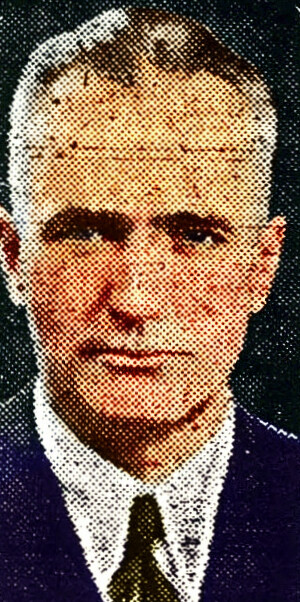
Maj. Williams: Ernie could say it
By Maj. Al Williams
The passing of Ernie Pyle recalls many memories of years ago.
When I first met Ernie, he was the aviation editor of The Washington News. Aviation news of those days largely was confined to the progress of feuding between the Army and Navy, with a dash of commercial aviation – such as it was.
Every service airman stationed in Washington knew Ernie. The unassuming little guy with the pleasant smile got around and everybody called him Ernie. He wrote his flying news so that lay folks could understand it. Some of us came to know Ernie mighty well. We were in the thick of a losing fight to awaken the country to what we thought we saw coming in the form of airpower. And to do this we had to attack deeply-entrenched traditional prejudices.
It was Ernie who often dropped a wise word of caution which saved a few lads I know from officially breaking their precious necks. It was Ernie who sat next to me and covered my congressional fight – and I still preserve a copy of what Ernie had to say about that battle for high-speed research so that we would know how to build high-speed fighters when we needed them.
Caught the significance
Ernie quickly caught the technical significance of an aviation story, but, as so highly developed in his later writings, he probed with the delicate touch of a sensitive instinct until he found the deep, underlying stream of warm human-interest factors. And then – Pyle fashion – he told his story as only he could tell it. Furthermore, Ernie never became greater than the men he wrote about, and in this critical angle differed from the usual run of air writers.
There’s been a deepening public nostalgia in this land for reality, for the warm homey fundamentals of old-fashioned Americanism. And nowhere was this nostalgia more evident than in the popular turning of everyday, ordinary people to Ernie’s daily column.
I remember the first time I took Ernie as a passenger in a Navy two-seater fighter, his cool smile as I lashed him up in his parachute and his remark as I passed along a few directions as to what to do with that chute ring – when, as, and if–
Admitted he was scared
This little, frail guy had a great soul deep down inside, and a heart to take whatever came his way. Ernie just sat there, keenly alert, seeing everything, registering everything. Scared – as he told me later. Sure, he came right out with the confession.
With these memories of the Ernie Pyle of other days I have never been surprised at his understanding of our boys’ real thoughts and his ability to tell the story so everyone could understand it.
We are all designed according to the same general plan – the same number of bones, the same aches and the same wants. The big, distinguishing difference is in the intensity of that little light way down deep inside which we call a soul. In some it burns dimly. In others it flares once in a while. In still others it burns very brightly at times. But in some, it is incandescent, burning its owner as well as those nearby with an unquenchable determination to live fully and completely. Such a light illuminated the life of Ernie Pyle, best exemplified to me by his words years ago as I buckled on his parachute:
“Maybe I can’t take it, Al, but fly this flight as if I weren’t with you.”